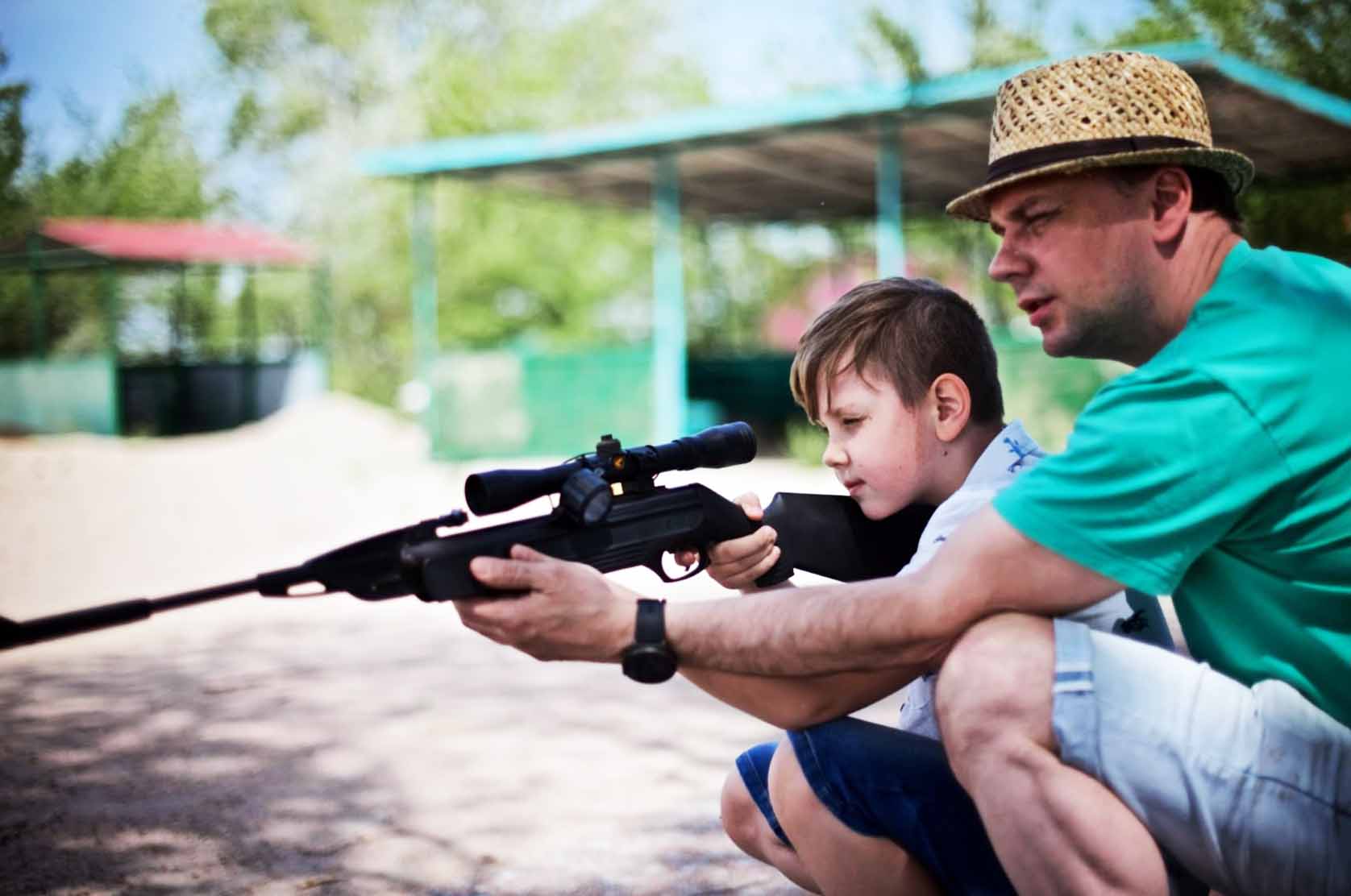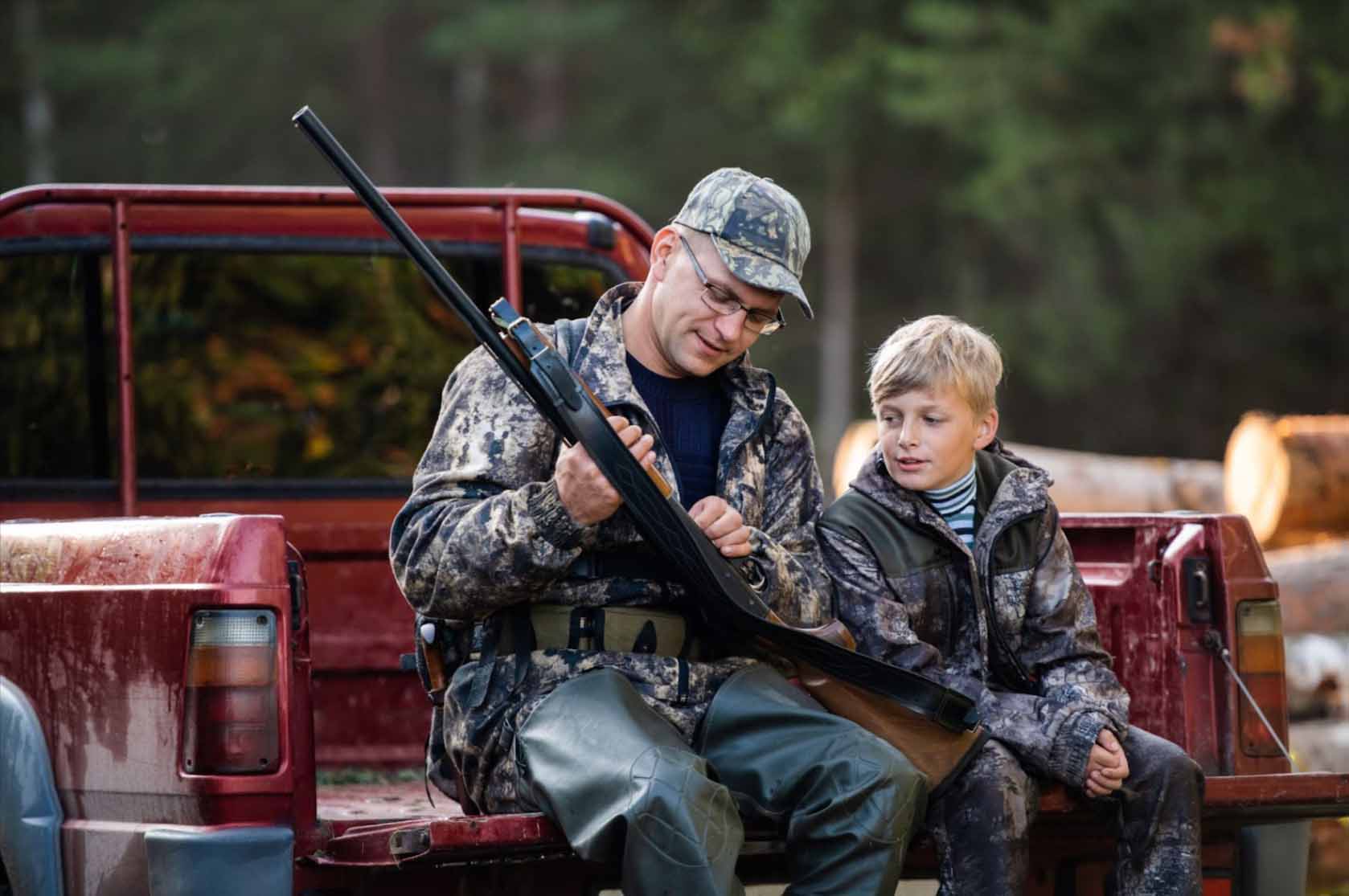May 31st 2024
Parents' Guide to Kids' Gun Safety Education
A Parent's Guide to Educating Children on Gun Safety
Educating children about gun safety is a paramount responsibility for parents, especially in households where firearms are present. The foundation of this education is built on open communication, establishing clear rules, and leading by example.
Teaching kids gun safety is crucial in preventing accidents and ensuring their well-being. By instilling respect for firearms and understanding their potential dangers, we empower children with the knowledge to act safely and responsibly, laying the groundwork for a lifetime of responsible gun ownership and usage.
How Parents Can Teach Kids Gun Safety
To bridge the gap between understanding the importance of gun safety and implementing effective teaching methods, let's explore how parents can practically and effectively teach their kids about gun safety, turning knowledge into action for a safer future.
Open Communication: The Foundation
Open communication is crucial in creating a safe environment for discussing gun safety. That involves initiating conversations about firearms early and adapting the complexity of the information to the child's age and maturity level. For younger children, the focus should be on the basics. Guns are potentially hazardous and must never be touched in the absence of an adult.
As children grow, these discussions can evolve to include the ethics of gun use, the importance of mental health, and the responsibilities of gun ownership.
Strategies for Effective Dialogue
Encouraging children to share their feelings and questions about guns is like opening a door for them to explore a complex topic in a safe and supportive environment, much like how we encourage them to talk about their favorite hobbies or fears. Creating hypothetical scenarios to discuss safety is akin to practicing for a sports game or a performance, where we anticipate different situations and plan our responses accordingly. By using relatable analogies, we can make safety concepts feel more familiar, just like how we use everyday examples to explain new ideas or rules. Ultimately, these approaches help children understand the importance of safety around guns in a way that feels engaging and relevant to their lives.
Establishing Clear Rules and Boundaries
Clear rules serve as the backbone of gun safety in the home, with unequivocal mandates like never touching a gun without adult supervision and always treating it as if it's loaded. This guidance isn't a one-time announcement but an ongoing conversation, requiring consistent reinforcement through actions and reminders. Making these rules memorable is key; parents can utilize simple, catchy phrases like "Stop, don't touch, Leave the area, Tell an adult" to guide children on what to do when encountering a firearm. Moreover, posting written reminders in gun storage areas, out of children's reach, offers constant visual reinforcement, ensuring the importance of gun safety remains prominent in the household.
Regular reviews of these rules with children help to keep the information fresh in their minds, solidifying their understanding and recall of these crucial safety steps. By integrating these discussions and reminders into daily life, parents can instill a deep-rooted awareness of gun safety, empowering children with the knowledge and habits necessary to prevent accidents and promote responsible behavior around firearms.
Demonstrating Safe Gun Handling
Visual demonstrations of safe gun handling can significantly reinforce the message of gun safety. It could include showing how guns are stored, how safety mechanisms work, and how to handle firearms properly. These demonstrations should always prioritize safety, with the weapon empty and, if possible, disassembled.
Parents can demonstrate the importance of regular upkeep and the proper attitude toward gun ownership by showing how to clean and maintain a firearm. They can also demonstrate how gun safes and locks work, highlighting the need to keep firearms secure and out of reach and teaching children why these safety measures are crucial.
Involving children to check that firearms are empty provides them with hands-on experience in safe handling practices. This reinforces the lesson that guns must always be treated with the utmost caution and respect, instilling a practical understanding of safety protocols.

Creating a Secure Environment
A secure environment is essential for gun safety. That means implementing measures to ensure firearms are inaccessible to unauthorized users, particularly children. Using gun safes, lock boxes, and trigger locks are critical components of a safe home.
Tips for a Safe Home
Select storage solutions that strike a balance between robust security and accessibility for authorized users during emergencies. It's crucial to educate all household members about the significance of secure storage to deter unauthorized access. Additionally, conducting regular audits of your security measures helps pinpoint potential areas for improvement or vulnerabilities, ensuring continuous enhancement of firearm safety protocols within the home.
Role-Playing for Real-Life Preparedness
Role-playing can be an effective method for teaching children how to react in situations where they might encounter a firearm. By creating realistic scenarios, children can practice the correct responses, building confidence and reinforcing the importance of safety.
Parents can guide their children through the appropriate actions to take in such situations by mimicking possible encounters, such as finding a gun at a friend's house. These steps include emphasizing the importance of not touching the firearm and the immediate need to inform an adult. Through discussion and active role-play, children can practice these critical actions, ensuring they know how to respond safely.
Fostering Respect Over Fear
Teach children respect for firearms rather than instilling fear. Fear can pique curiosity, leading to potentially dangerous situations. Instead, a balanced approach that respects the power of weapons and emphasizes the responsibility of handling them is more effective.
Balancing the narrative on gun safety involves sharing stories of positive gun use, highlighting its role in sports and law enforcement. This approach provides children with a well-rounded view, emphasizing the importance of firearms in society and the benefits of responsible behavior.
Utilizing External Resources for Comprehensive Education
A variety of external resources can complement the education parents provide at home. The following resources can offer different perspectives and reinforce the importance of gun safety through engaging content.
Various resources are available to educate children about gun safety in engaging and structured ways. Programs such as the NRA's Eddie Eagle GunSafe® provide age-appropriate curriculums, offering a structured approach to teaching firearm safety. Additionally, local law enforcement agencies frequently conduct outreach programs specifically tailored to educate children about gun safety. Moreover, online resources, including videos and interactive games, can supplement traditional learning methods, making the educational experience more engaging and memorable for children. By utilizing these diverse resources, parents and educators can ensure that children receive comprehensive and effective instruction on how to stay safe around firearms.
The Importance of Being a Role Model
Parents are the most influential role models in their children's lives. Demonstrating responsible gun ownership and regular safe handling practices reinforces the lessons shared and shows children the importance of respecting firearms.
Setting the standard for gun safety involves regularly practicing safe handling measures. Share your thought process during these actions with your children to provide insight into the significance of each safety measure. Involving them in discussions about gun safety news stories or events also presents valuable opportunities to explore lessons learned and reinforce best practices.
Keeping the Conversation Going
Gun safety education is not a one-time event but a continuous conversation that should adapt as children grow and their understanding deepens. This ongoing dialogue ensures that children's education on gun safety evolves with their development, maintaining relevance and effectiveness.
Schedule regular discussions to review gun safety rules and introduce new concepts as children mature. Be open to revisiting topics and answering new questions as they arise, providing clear, honest answers. Lastly, encourage children to think critically about gun safety and come to you with any concerns or questions.
Embracing Community Resources
In addition to leveraging external programs and law enforcement resources, parents can tap into community networks for support and education on gun safety. Community resources can offer a broader social context for gun safety, reinforcing the message that it's a shared responsibility.
Participate in community-led gun safety workshops and seminars to gain insights and share experiences with other parents. You may also engage with school programs that promote safety and awareness, contributing to a culture of responsibility from an early age. Utilizing local athletes' clubs for educational programs on responsible gun handling and sportsmanship is also a good resource.
Addressing Curiosity Constructively
Children's curiosity about firearms is natural and can be teachable if handled constructively. Addressing this firearm curiosity head-on can demystify firearms and reduce the risk of secretive or unsafe behaviors.
Guiding curious minds involves offering factual, straightforward answers to their questions about guns and avoiding any glorification of firearms. For children of appropriate age, consider supervised introductions to firearms in controlled environments like shooting ranges, where safety and responsibility are emphasized. Additionally, parents can use their curiosity as an opportunity to revisit and reinforce safety rules, ensuring they understand the importance and rationale behind each guideline.

A Psychological Approach to Safety Education
The psychological aspect of gun safety education is crucial. How children perceive guns and their safety messages can significantly impact their attitudes and behaviors. A positive, proactive approach to discussing gun safety can foster a healthy mindset towards firearms.
Developing a Safety Mindset
Instilling a deep respect for safety around firearms involves emphasizing the value of life and the permanent consequences of carelessness. By highlighting the importance of responsible behavior, individuals develop an understanding of the gravity of their actions. Positive reinforcement plays a crucial role in this process, as celebrating adherence to safety rules fosters a positive association with responsible behavior. Addressing any fears or misconceptions directly is essential in building confidence in safe handling practices. By providing reassurance and correct information, individuals can overcome apprehensions and develop the skills needed to handle firearms safely. This holistic approach ensures that individuals not only understand the importance of firearm safety but also feel empowered to practice it confidently in any situation.
Practical Exercises and Familiarization
Practical exercises beyond role-playing can further reinforce safety lessons. Familiarization with the mechanics and functions of firearms, under strict supervision, can demystify guns and reduce the likelihood of accidents stemming from curiosity or ignorance.
Practical, hands-on learning experiences can complement theoretical education, providing a comprehensive understanding of gun safety and responsibility.
Continual Education and Evolving Conversations
As children grow, their capacity for understanding complex concepts increases. Parents should evolve the conversation about gun safety to include discussions about the societal impact of firearms, legal responsibilities, and the ethical use of guns for self-defense and sports. Continually adapting and expanding the conversation around gun safety can ensure that children receive a well-rounded education that prepares them for responsible gun ownership and citizenship.
Visit our Gunline Shooting blog for comprehensive guides and expert tips to ensure your family stays safe and informed.

